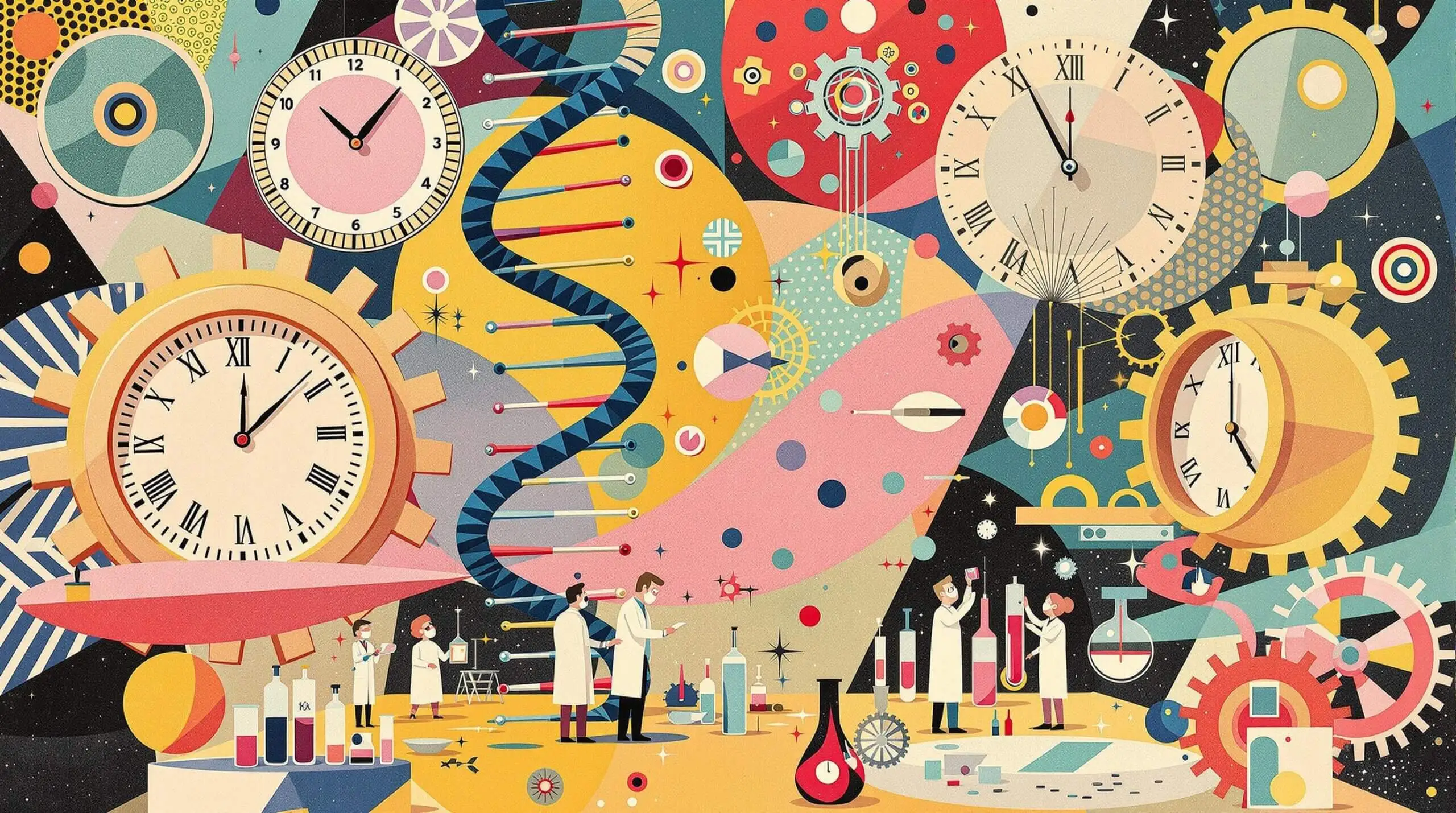Unlocking the Longevity Code: New Science You Haven’t Heard
Explore groundbreaking new science on unlocking human longevity you haven’t heard about yet.

The Latest Breakthroughs in Longevity Science
Revolutionary Discoveries Changing Our Understanding of Aging
Scientists have recently uncovered fascinating mechanisms that control how we age. These findings go beyond the usual suspects – diet, exercise, and genetics. We’re talking about cellular processes that, once understood, could help us live significantly longer and healthier lives.
The Cellular Time Keepers
Remember mitochondria from high school biology? These tiny powerhouses are now center stage in longevity research. New studies show they don’t just produce energy – they actively control our aging process. When mitochondria function properly, they produce specific molecules that tell our cells to stay young. When they malfunction, they accelerate aging.
Emerging Research Directions
The most exciting discoveries are happening in three main areas: cellular reprogramming, senescent cell elimination, and epigenetic modifications. Each represents a different approach to extending human lifespan, and together, they’re reshaping our understanding of what’s possible in life extension.
Breaking Through Previous Limitations
Until recently, scientists thought aging was inevitable and unchangeable. New research proves otherwise. Labs worldwide have successfully reversed aging markers in animals, and early human trials show promising results. These aren’t small improvements – we’re seeing age-related damage actually being repaired at the cellular level.

Revolutionary Cellular Reprogramming
Understanding Yamanaka Factors
The big news in cellular reprogramming centers on Yamanaka factors – four genes that can reset cellular age. Scientists have figured out how to activate these genes safely, temporarily turning back the biological clock without causing cancer or other problems. This technique has already restored vision in mice with age-related eye damage.
Practical Applications in Development
Research teams are now working on delivering these rejuvenating factors using safe viruses or small molecules. The goal is to develop treatments that could restore tissue function in aging organs. Early results suggest this might help with heart disease, neurodegeneration, and other age-related conditions.
Senescent Cell Elimination: The Zombie Cell Revolution
What Are Senescent Cells?
These are damaged cells that refuse to die naturally and instead poison their surroundings with inflammatory chemicals. New research shows they’re major drivers of aging and disease. The exciting part? We can now identify and remove them.
Senolytics: The New Class of Anti-Aging Drugs
Several compounds have proven effective at clearing senescent cells in human trials. The results are remarkable – improved cardiovascular function, better mobility, and reduced inflammation. One study showed that removing just 30% of senescent cells extended healthspan significantly.
Epigenetic Modifications: Rewriting the Aging Program
The Epigenetic Clock
Scientists have discovered that specific chemical markers on our DNA act as an aging clock. These markers can be measured to determine biological age, and – more importantly – they can be modified. Recent studies show these modifications can reset cellular age without changing the DNA sequence.
Practical Applications Being Developed
Companies are developing drugs that target these epigenetic markers. Early results show promise in treating age-related diseases and potentially slowing the aging process itself. Some researchers have already demonstrated partial age reversal in human cells.
Critical New Findings in Longevity Research
- NAD+ levels directly influence aging speed and can be boosted with supplements
- Specific gut bacteria produce compounds that extend lifespan
- Exercise creates proteins that rejuvenate brain cells
- Fasting triggers cellular repair mechanisms
- Sleep quality affects brain aging more than previously thought
- Cellular stress responses can be optimized for longevity
- Mitochondrial function can be restored in aging cells
- The blood-brain barrier can be protected against age-related breakdown
Practical Applications of New Longevity Science
Implementing Current Knowledge
While some breakthroughs are still in the lab, others can be applied now. Time-restricted eating, specific exercise protocols, and targeted supplementation can activate many of these newly discovered longevity pathways.
Tracking Your Biological Age
New blood tests can measure biological age markers, including DNA methylation patterns, inflammatory factors, and metabolic health indicators. These tools allow individuals to monitor how lifestyle changes affect their aging rate.
Actionable Steps Based on New Research
- Regular intense exercise to boost NAD+ levels
- Strategic fasting to activate cellular repair
- Specific supplements targeting aging mechanisms
- Sleep optimization for brain health
- Stress management techniques that protect telomeres
- Diet modifications based on personal biomarkers
- Regular movement to maintain mitochondrial function
- Social engagement for cognitive preservation
Future Developments and Implications
What’s Coming Next
Clinical trials are underway for several promising interventions. These include gene therapy for longevity genes, new senolytic drugs, and stem cell treatments. Results from these studies could lead to approved treatments within the next few years.
Ethical and Social Considerations
As these technologies develop, important questions arise about access, cost, and social impact. Who gets these treatments? How do we ensure fair distribution? These questions need addressing as the science advances.
Key Areas to Watch
- Development of more effective senolytics
- Advances in cellular reprogramming safety
- New epigenetic modification techniques
- Mitochondrial enhancement therapies
- Brain rejuvenation treatments
- Immune system restoration methods
- Tissue regeneration technologies
Recent discoveries in longevity science have opened remarkable possibilities for extending human healthspan and lifespan. While some technologies remain in development, many findings can be applied today through lifestyle modifications and emerging treatments. The field moves quickly, with new breakthroughs appearing regularly. Staying informed about these advances helps make better health decisions and prepare for future developments. The science suggests that significant extension of healthy human lifespan is not just possible – it’s becoming probable.